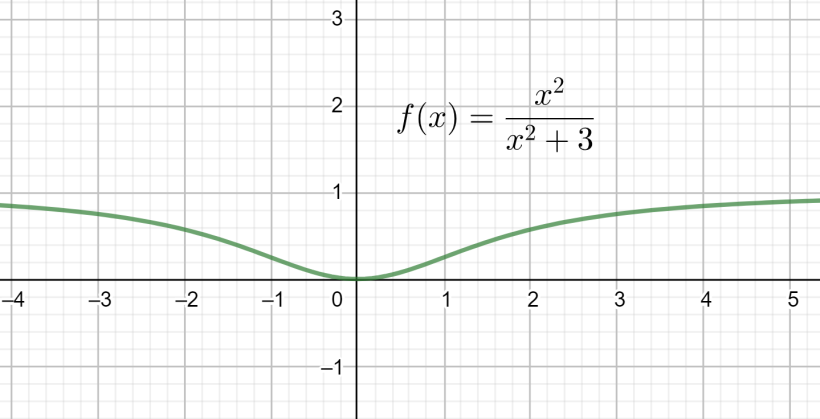Question
Question: How do you find increasing, decreasing intervals, local max mins, concave up and down for \(f\left( ...
How do you find increasing, decreasing intervals, local max mins, concave up and down for f(x)=x2+3x2 ?
Solution
Here we have been asked to find the increasing, decreasing intervals, local maximum and minimums, concave up and down for f(x)=x2+3x2 . For that we will find the critical point which the value of x for dxdf(x)=0 and the inflection points which are the values of x for which dx2d2f(x)=0 . We will evaluate f(x) around critical points for increasing and decreasing intervals. Local maximum and minimum respectively exists at the values of x for which dxdf(x)=0 , dx2d2f(x)<0 and dx2d2f(x)>0 respectively.
Complete step by step solution:
Now considering from the question we have been asked to find increasing, decreasing intervals, local max mins, concave up and down for f(x)=x2+3x2 .
For that we will first derivative the given function with respect to x
dxdf(x)=dxd(x2+3x2)⇒(x2+3)22x(x2+3)−x2(2x)=(x2+3)26x
When x=0, then dxdf(0)=0 this point is known as a critical point.
By substituting different values for x we will have f(0)=0 , f(1)=41 and f(−1)=41
So we can say that the function is decreasing in (−∞,0) and increasing in (0,∞)
Now we will differentiate the expression which we got by differentiating f(x) with respect to x again with respect to x . Now we will have
dx2d2f(x)=dxd((x2+3)26x)⇒(x2+3)46(x2+3)2−6x(2(x2+3)2x)=(x2+3)318(1−x2)
When x=0 then dx2d2f(x)=3318⇒32<0
Therefore the local minimum exists at x=0 that is f(0)=0 . Moreover this is the absolute minimum for the function.
We will evaluate around the inflection points to know where the curve is concave up and concave down. When f′′(x)<0 in the interval the curve will be concave down and f′′(x)>0 in the interval the curve will be concave up.
Now we will find the Inflection points of f(x) which are the values of x for f′′(x)=0 . They are x=±1 .
As f′′(x)<0 in (−∞,1) the curve will be concave down.
As f′′(x)>0 in (−1,1) the curve will be concave up.
As f′′(x)<0 in (1,∞) the curve will be concave down.
Therefore the curve is concave up for (−1,1) and concave down for (−∞,−1)∪(1,∞) .
Note:
While answering this question we should be sure with our concept and calculations we perform. This question can also be answered by clearly observing the graph of the function which looks as shown below:

